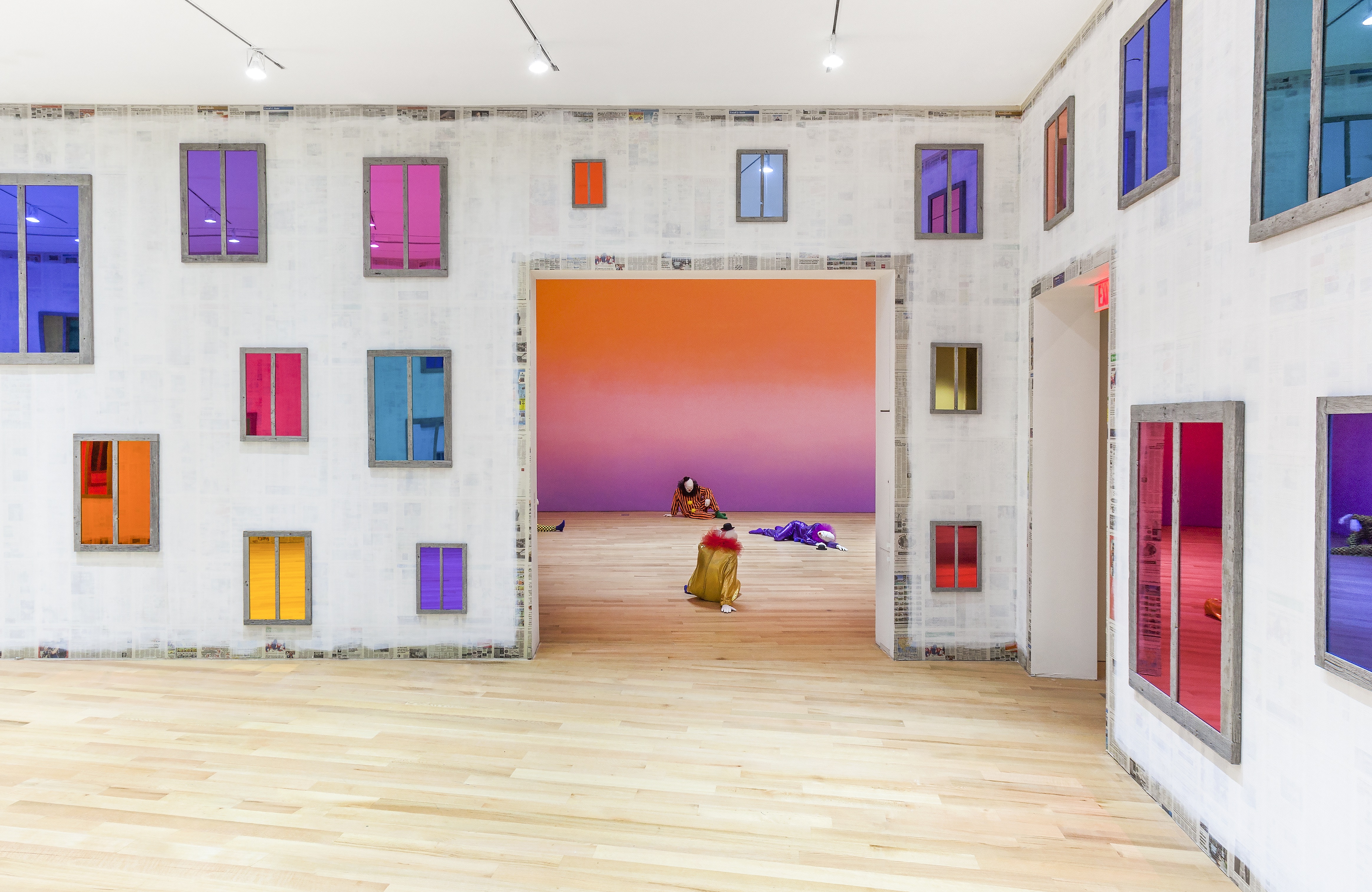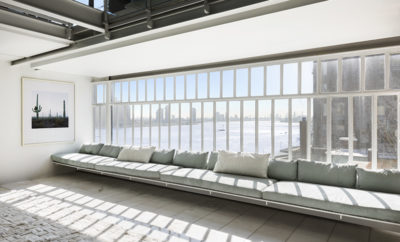 The Bass, Miami Beach. View of the historic 1930s structure designed by Russell Pancoast. All images courtesy of The Bass, Miami Beach. Photo © Robin Hill.
The Bass, Miami Beach. View of the historic 1930s structure designed by Russell Pancoast. All images courtesy of The Bass, Miami Beach. Photo © Robin Hill.
Architecture
The Bass Museum Reopens its Doors after a Revamp
Miami Beach’s Bass Museum of Art reopened its galleries to the public on October 29th after a two-year renovation and expansion, adding almost fifty percent more programmable space within the existing footprint. This comes in tandem with a new website and visual identity, a new art acquisition initiative, and a new name of sorts. Now, the museum goes with the shortened moniker of “The Bass” where they can.
Looking out over Collins Park in South Beach, the Bass’s historic building was originally designed in the 1930s by Russell Pancoast, one of the earliest and most seminal of South Florida’s architects. It is a symmetrical art deco building in oolitic limestone, the local bedrock, with a central portico and flanking wings.
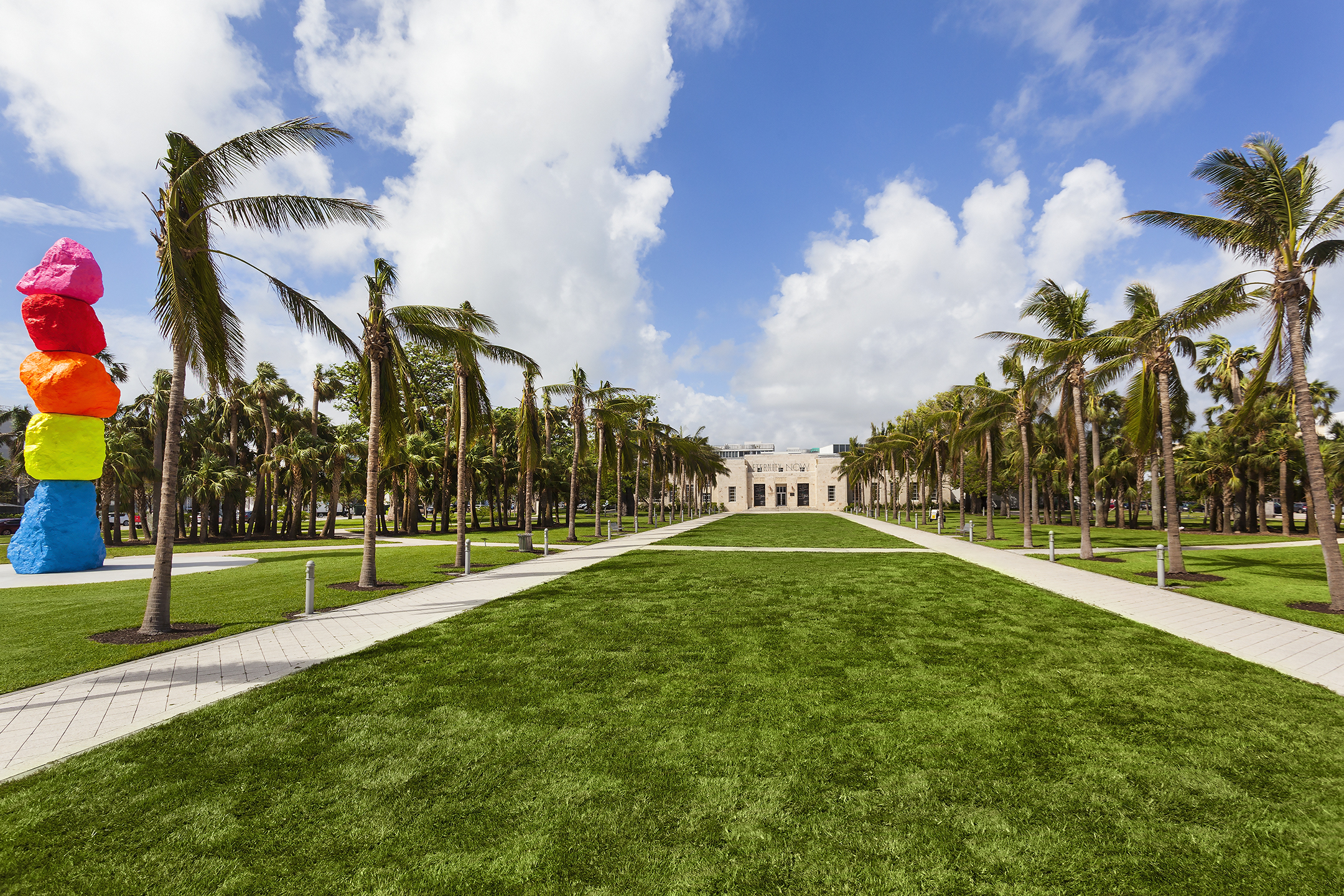
View of The Bass and Ugo Rondione’s Miami Mountain (2016) from Collins Park. All below photography by Zachary Balber.
The first public exhibition space for art in South Florida, the Bass was significantly expanded in 2001. The museum reengaged the architectural team of David Gauld as principal architect, and Arata Isozaki as a consultant, both of whom worked on the 2001 expansion, for this last renovation. Designer Jonathan Caplan took charge of many of the interior elements. Overall, Gauld, Isozaki and Caplan worked to correct and improve on a number of elements of the 2001 design—being sensitive to the historic structure while using the museum’s limited space more efficiently.
The ramp that connected the upstairs and downstairs galleries, the most dramatic element of the 2001 renovation, is gone, and in its place is an atrium-like lobby, grand staircase, and multiple new exhibition spaces on both levels. A courtyard on the north side of the structure has been enclosed but retains the feeling of being outside. Like the tablinum in an ancient Roman house, a small shop and café are located between the lobby and courtyard. Meanwhile, a new education wing with three spacious classrooms is in the northwest part of the building. It occupies space formerly used for circulation, an older shop, and what was an underutilized outdoor area underneath the second-floor gallery. At over 5,000 square feet, this is now one of the largest educational facilities within a museum in South Florida.
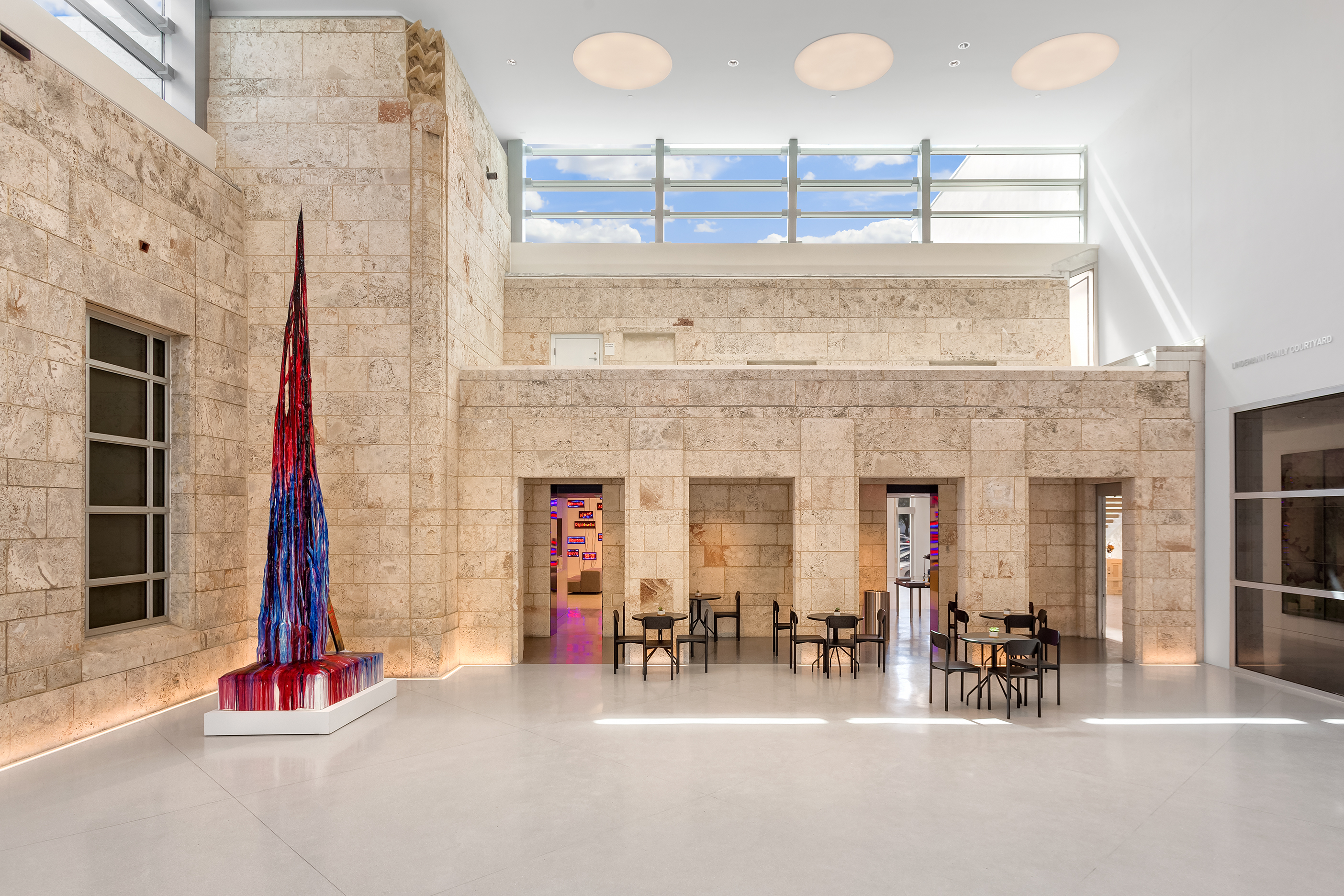
View of the new courtyard at The Bass.
To the west, a long first-floor gallery is dedicated to creatively looking at the museum’s historic collection “in dialogue with a series of rotating artist projects” as stated in a press release. The Bass was founded on this collection, which includes items as diverse as an Egyptian mummy, renaissance wall tapestries and old master paintings that were donated by John Bass, an early resident of Miami Beach. The original collection, however, is limited to this wing, while contemporary art dominates everywhere else.
The artist Pascale Marthine Tayou’s exhibition, Beautiful, which is currently up, is the first contemporary artist project to have that dialogue with the historic collection, with towers of ceramic pottery. Upstairs, a lengthy grand hall added in 2001 is the Bass’s largest single exhibition space. It is currently populated by dozens of life-size clowns by Ugo Rondinone. They are part of a solo show by the artist that also occupies an adjacent brand-new gallery, and a smaller entry gallery at the top of the grand stair.
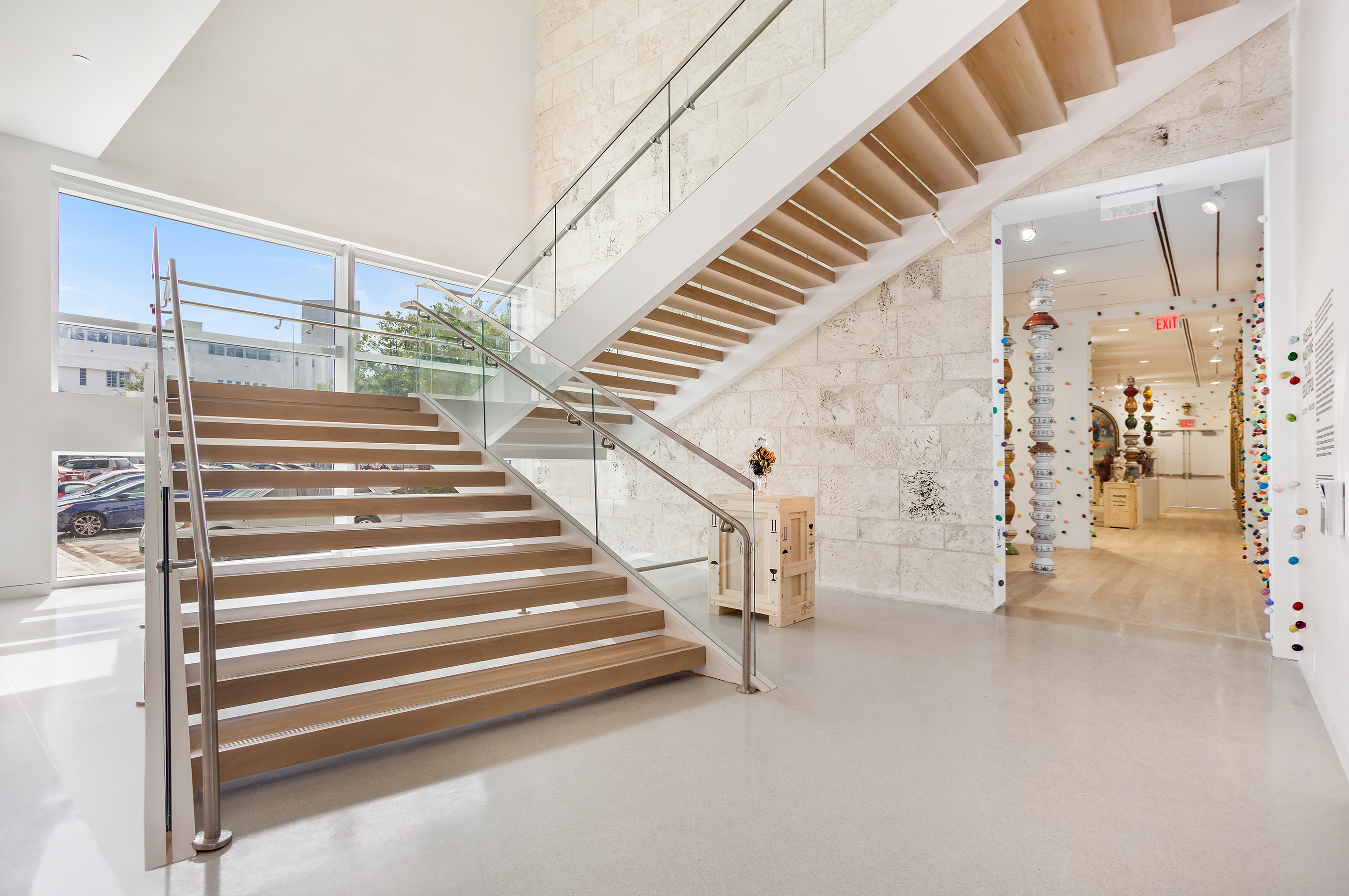
View of the The Bass’ first floor staircase.
Although the Bass’s curatorial focus has undeniably shifted toward contemporary, particularly under the wing of its current director, Silvia Karman Cubina (the museum had previously attempted, with mediocre success, to be an encyclopedic institution), the renovation seems to take the building itself in the opposite direction. By removing the most significant piece of statement architecture—the ramp—for pure practicality, and effectively becoming a series of efficient white boxes behind an iconic historic building, the Bass building really puts history before the present. However, on a constrained, urban site, where you already have a fantastic older structure that could otherwise have been overwhelmed by something dramatically new, maybe that’s just the right thing to do.


